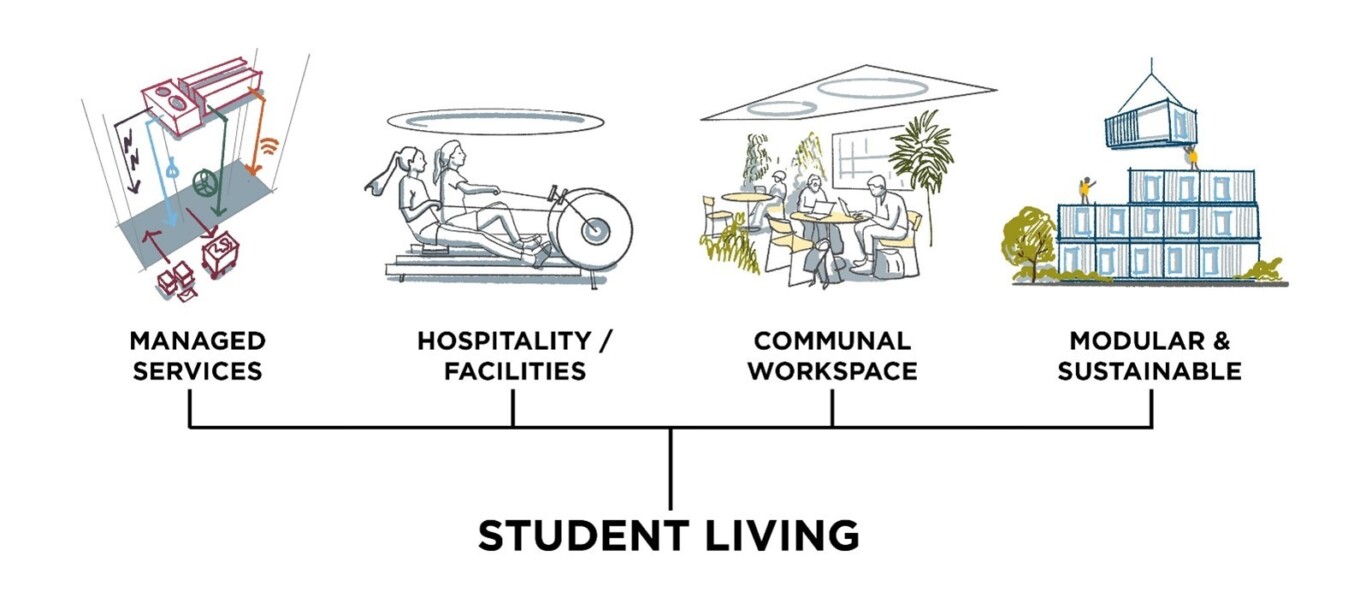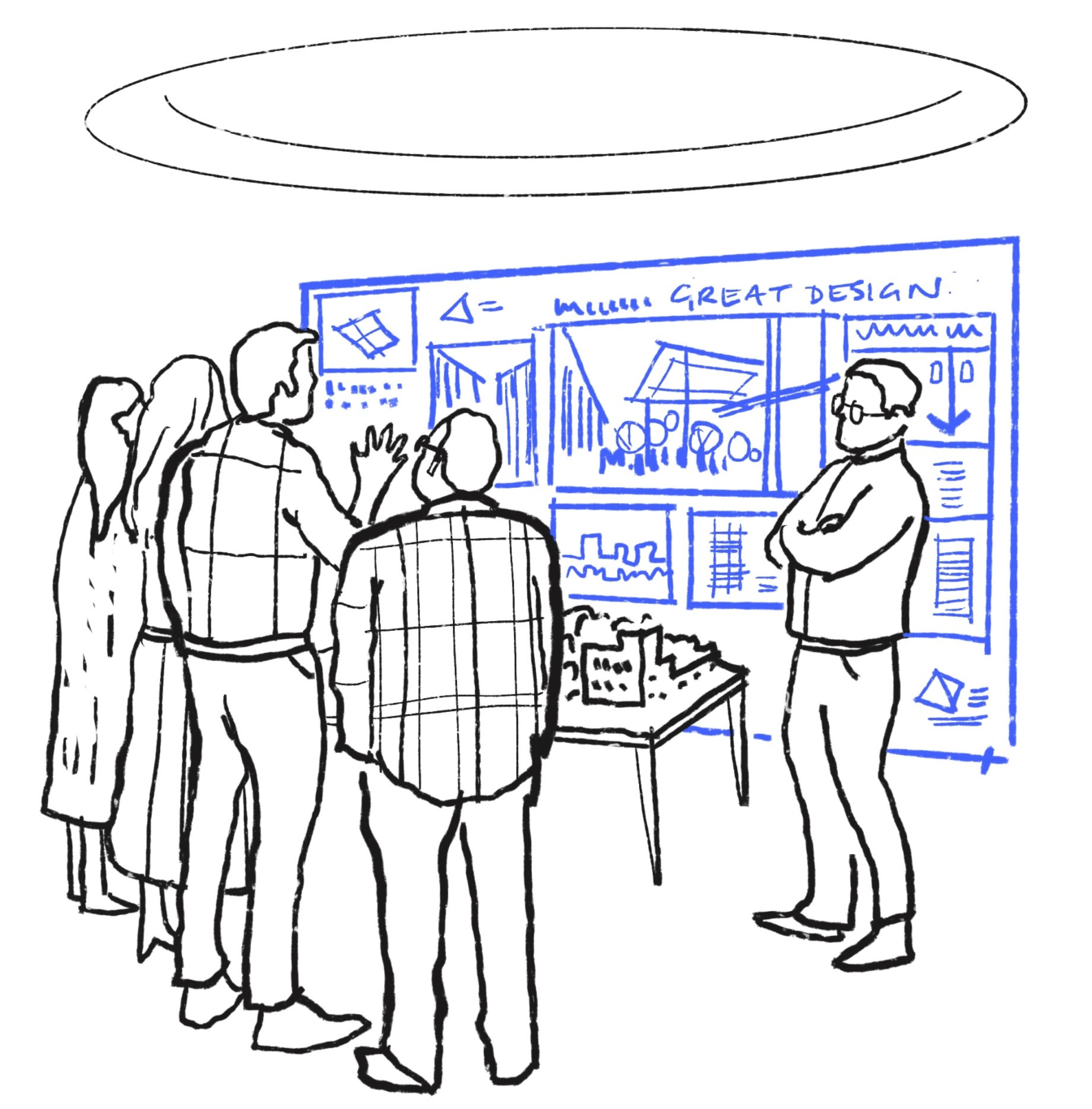
The Case for Student Residential in Urban Design
Our Mixed-Use Sector includes a number of different Knowledge Leaders across our three UK studios, each responsible for research and communication of different building typologies.
Here, Daniel Morgans, an Associate Director in our London studio provides a brief study on ‘Purpose-Built Student Accommodation’; and dispels some myths regarding the placement of this typology within urban mixed-use schemes. We also briefly look at our Avon Street Residential design as a case study.
The Evolution of Purpose-Built Student Accommodation (PBSA)
PBSA provides valuable resource to the HE institutions it serves and supports students with a safe and secure environment as a counterpoint to the traditional private rented housing or HMO. The PBSA sector enjoyed a significant boost during the pandemic, supplying demonstration of value in pastoral care and interaction. PBSA shares many common themes with both Build-to-Rent (BTR) and Later Living accommodation with a fuss-free living experience, access to communal facilities, and a turn-key provision of building services.
The evolution of blended online learning has also made a compelling case for a student environment that is digitally integrated, reliable, secure, and provides quiet areas for home study.
Local Concerns
Traditional student residential schemes and HMO have given the sector a ‘lively’ reputation that is, in most cases, no longer true. Students are represented by a high number of high-paying international visitors who are traditionally extremely studious, as are most local students alike. PBSA buildings are also tightly controlled with security staff, and codes of conduct that must be followed by all residents. Therefore, the building is in many ways like a BTR block with slightly different modular proportions.
Local residents do have some minor concerns around parking, inclusivity, affordability and wider pressures on infrastructure, but in comparison with other uses within mixed-use communities the impact is relatively light. Fewer students have cars than families or office workers and are likely to use fewer local services such as medical centres and schools.
A Positive Part of the Mix
PBSA consists of a number of active uses as shown in the diagrams below. These can be offered to the local community during various times of the day, and contribute to the Community and Social Value score. PBSA blocks normally contain an active ground floor, with an element of these open to the public and the associated active facades contributing to the urban fabric.
The diagram below illustrates a typical city, in this case Bristol, where PBSA is seamlessly integrated into a wider masterplan, and not clustered into a campus 'district'. Nearly all of the sites marked above are surrounded by other uses such as retail, offices, leisure and hotels, and the shared benefits of a day and night-time economy can be realised. Our proposed scheme for Avon St Residential sits to the bottom right of the diagram.
Chapman Taylor has extensive experience in planning and designing PBSA. Please contact Daniel Morgans for more information.


